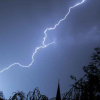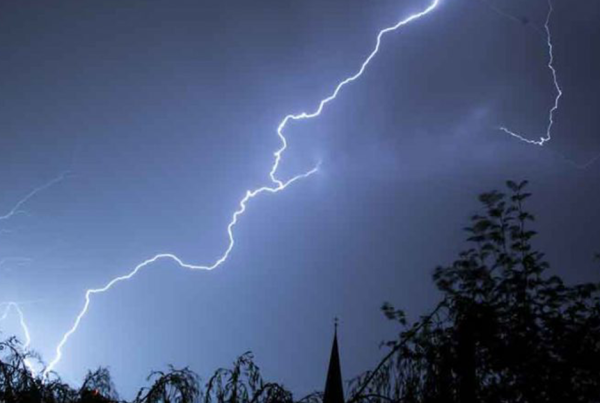
What Kinds of Bugs Can Kill Trees?
Are you sick and tired of pesky critters damaging your trees and shrubberies, eating away at the foliage until the plant ends up looking like it has been ravaged by a storm? Beneficial insects can help control harmful pests and aid in pollination, promoting plant health. Maintaining healthy trees through proper care such as fertilizing, watering, and mulching is crucial to prevent pest infestations.
Seriously, how do you get over the fact that you’ve spent a lot of effort, time, and money on having your ornamental trees and garden look vibrant and beautiful only for them to be destroyed by an insect infestation?
Just imagine…
An elegant thriving Japanese maple tree, with its red lacy leaves adding natural beauty and luster to your garden. But because of an infestation of bugs like Japanese beetles, scales, aphids, mealybugs, and borer insects, it’s slowly withering away like an old diseased tree in autumn. Trees such as blue spruce, oak, and other deciduous trees can also be severely affected by these pests. Insect damage on these trees can lead to symptoms like drooping and wilting leaves, making early detection and treatment crucial.
What can you do to keep this from happening to your trees and shrubberies? Is there a way to control insect infestation in trees?
The best and most practical solution is to be proactive. Prevention is the key to controlling these pests. And the way to do that is to learn to identify bugs that are bad for trees and know how to get rid of them before they become a serious problem.
Symptoms of Tree Pests
Identifying symptoms of tree pests early can make a significant difference in preserving the health of your trees. Here are some common signs to look out for:
Yellowing Leaves
One of the first indicators of infected trees is the yellowing of leaves. This can be caused by insects like aphids and scale insects, which suck the sap from the leaves, depriving them of essential nutrients. If you notice your tree’s leaves turning yellow, it’s important to inspect for pests immediately.
Premature Leaf Drop
When trees start shedding their leaves earlier than usual, it can be a sign of pest damage. Insects such as the emerald ash borer and bronze birch borer can cause stress to the tree, leading to premature leaf drop. This symptom is particularly concerning in deciduous trees, as it can stunt growth and affect the tree’s overall health.
Wilting or Drooping Leaves
Wilting or drooping leaves can indicate that the tree is under attack from pests that damage the tree’s vascular system, such as bark beetles. Leaf damage can prevent the tree from effectively transporting water and nutrients, leading to visible distress in the foliage.
Presence of Mold
Sooty mold is a black, powdery substance that grows on the tree’s bark, leaves and branches. It is often associated with honeydew, a sticky substance produced by sucking insects like aphids and spider mites. The presence of sooty mold can inhibit photosynthesis, further weakening the tree.
Visible Insect Activity
Regularly inspect your trees for visible signs of insect activity, such as the presence of egg masses, larvae, or adult insects on the leaves, branches, or tree trunk. Early detection of these signs can help prevent infestations from escalating.
By recognizing these symptoms early and taking appropriate action, you can help protect your trees from the harmful effects of insect pests and maintain a healthy, thriving landscape.
Types of Tree Pests
There are a myriad of insects that thrive on various species of plant life. Most are virtually harmless; they merely use the plants for shelter or to hunt for prey. However, there are those who feed on the plants and cause serious damage, either from the outside-in or vice versa. These are the destructive insects, including invasive species, you should be aware of, so you can learn to spot them and get rid of the pests before it’s too late. Early detection and intervention are crucial to prevent infestations from escalating and causing significant harm to tree health.
Regularly inspect your trees for signs of pest activity to ensure early detection and prompt action.
There are three basic types of destructive bugs that thrive on trees and other plant life; the burrowing or borer insects, the chewing or defoliating insects, and the sucking insects.
Burrowing Insects (Bronze Birch Borer and Emerald Ash Borer)
Borers are perhaps the most harmful to trees out of the bunch. These types of bugs, also called tunneling insects, burrow deep inside tree trunks, stems, twigs, and even roots to lay their eggs. Identifying and managing infested trees is crucial to prevent further spread. It’s the larvae from the eggs that cause the most damage to the tree, hindering the tree’s ability to absorb water and nutrients.
Some of these burrowing insects include:
- Asian Longhorned Beetle
- Elm Bark Beetle
- Emerald Ash Borer
- Bronze Birch Borer
- Dogwood Borer
The most effective method for keeping these types of insects away from your plants is through preventive measures. Always make sure that your trees are well-maintained, properly pruned, watered, and mulched. Pruning should only be done in the late fall or during winter so as not to attract insects to open cuts/wounds.
Defoliating Insects
If borer insects wreak havoc on trees from the inside-out, chewing or defoliating insects cause damage from the outside by eating away at the leaves, buds, flowers, and branches. Removing egg masses is crucial to prevent infestations and protect the health of your trees.
Some chewing insects, however, attack the fruit of fruit-bearing trees. The majority of these types of insects are caterpillars and beetles.
A few examples of these types of bugs include:
- Japanese Beetle
- Tent Caterpillar
- Gypsy Moth
- Spring and Fall Cankerworm
- Cherry Fruit Worm
- Leafminers
- Bagworm
Once these defoliating pests are found in your trees, the best course of action is to use physical barriers around the host tree to control insect movement within the breeding ground. Certain insecticides may also be used with the approval of a Certified Arborist. But the best defense against chewing insects is proper care and maintenance.
Sucking Insects (Spider Mites)
As their name suggests, sucking insects inflict damage on plant life by sucking out sap from the leaves and twigs like vampires. The presence of sooty mold is often an indicator of pest activity, as it grows on the sticky honeydew residue left by these tree bugs. But instead of sucking and feeding on blood, they feed on plant juices, including the nutrients that the plant needs to thrive.
Most of these types of bugs seldom move or migrate. They typically stay in one location, living under a hard protective coating. Their byproduct is a sticky substance on the bark and branches called honeydew, which contains unprocessed plant material and often promotes mold growth that can harm the tree foliage.
A few examples of these types of bugs include:
- Aphids
- Spider Mites
- Thrips
- Leafhoppers
- Scale Insects
The best recommendation for controlling the spread of sucking insects is to immediately kill them on contact to prevent reproduction. But of course, proper tree care and maintenance, especially for young trees, is always an effective approach.
If you need help with a bug-infested tree in the Reno area, American Arborists have your back.
Contact American Arborists Tree Care for Tree Bug Treatments
Maintaining healthy trees and shrubs requires vigilance and proactive measures to prevent and manage insect infestations. By regularly inspecting your trees for signs of pest activity, you can take early action to protect them from harmful tree pests like the emerald ash borer, bronze birch borer, and other destructive insects. Remember, proper tree care, including pruning, watering, and mulching, is essential to keep your trees healthy and resilient against insect damage.
If you suspect your trees are infested or need expert guidance on managing tree pests, don’t hesitate to reach out to us. At American Arborists, we are committed to helping you save trees and maintain a vibrant landscape.
Contact us today for professional tree care services and effective bug treatments in the Reno area. Your trees deserve the best care to thrive and remain a beautiful part of your environment.











